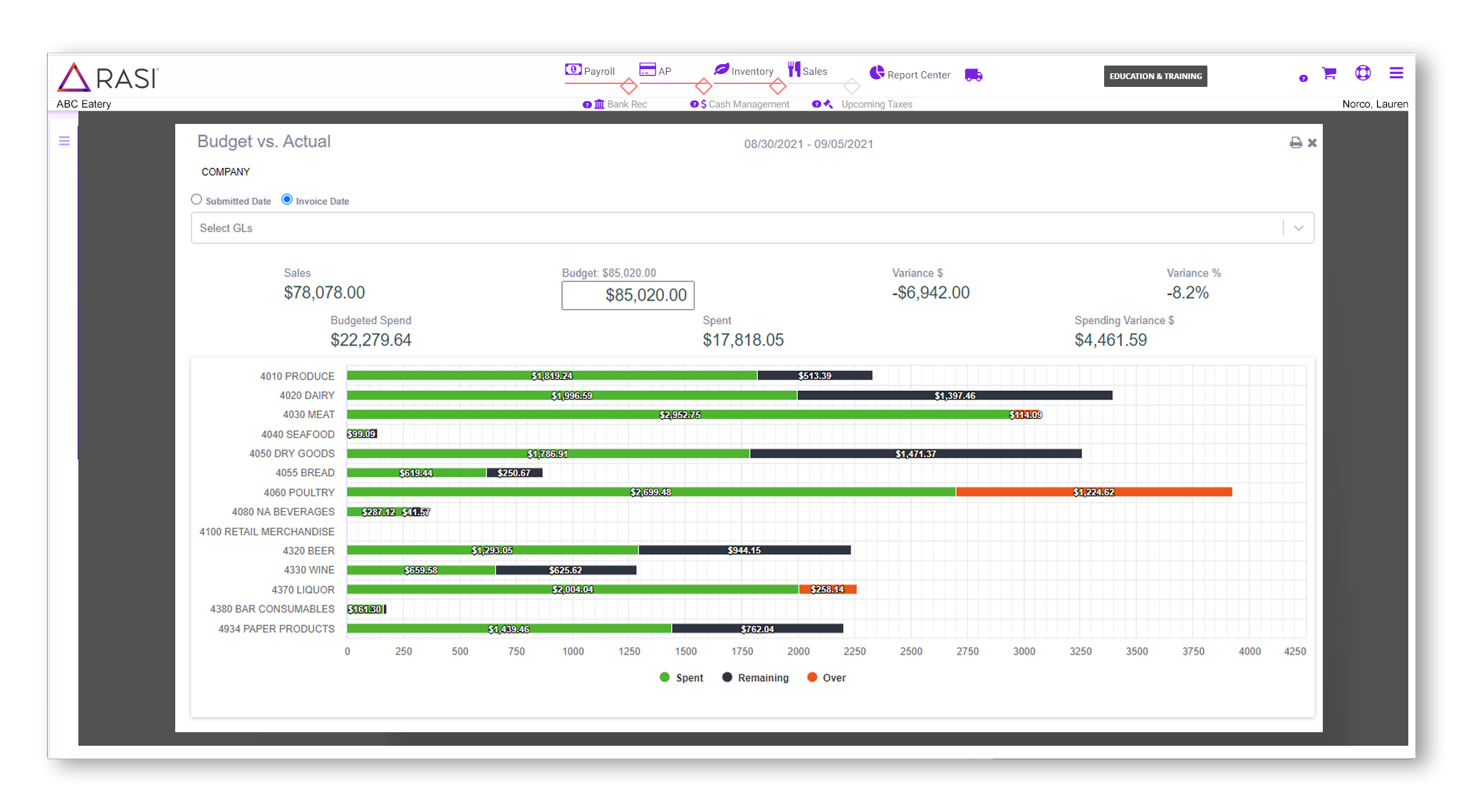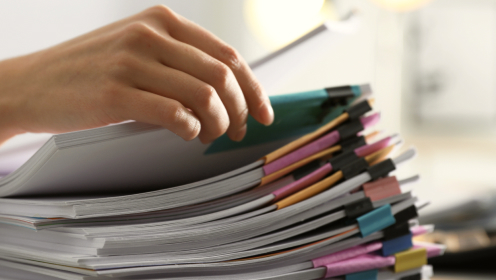When it comes to restaurant data, most operators record and track basic sales data, such as tickets, ticket size, tips, and nightly totals for food and beverage. They may be doing this manually, or directly through their point of sale (POS) system.
Your average restaurant then takes this basic sales data, copies it into spreadsheets, and hands it over to their accountant to calculate critical financial performance metrics. The accountant then issues periodic reports that allow the restaurant owner to retrospectively know how he did for the past period. Sound familiar? Clearly, this is a state of affairs ripe for positive disruption by next-generation restaurant technology.
A software-based restaurant management system, like RASI’s, will transform restaurant data collection in several ways.
- Restaurant data will flow directly from the POS to reporting dashboards that allow the restaurant operator to see how they are doing in real-time.
- The end of manual data entry. Financial data isn’t copied by hand into spreadsheets, rather it is automatically populated via POS integration.
- You can make data-based operational decisions. The software will allow you to recognize trends in sales, labor utilization, and menu performance, then make positive changes to the business.
What types of data should restaurants track?
With an integrated restaurant software suite, it’s possible to go far beyond the basic data collection described above. In fact, almost every aspect of your restaurant can be numerically measured and tracked, from the front of the house to the back of the house.
There are several areas where you should set up data collection and analytics, here are examples of a few:
- Sales reporting: Go beyond the simple sales metrics and analyze tickets by average order size, orders per hour, and orders per dish. This data should come directly from your POS system, which should be integrated into your restaurant accounting software. A SLA report (Sales & Labor Analysis) is an additional tool to utilize when understanding sales (and labor) against your forecast.
- Menu performance: Understand which dishes are contributing the most to your success, and identify underperforming dishes that should be changed or eliminated. When you involve your chef and take a comprehensive look at your menu, menu performance analytics can rise to the level of menu engineering.
- Inventory: Track your inventory by stock levels, usage, and age, so that you can establish exactly how much inventory should be kept on hand to meet demand without tying up to much cash or wasting money through spoilage. Ideally, inventory tracking should be paired with kitchen management processes like waste tracking, loss tracking, and portion control. This will enable you to get a handle on your cost of goods (COGS).
- Employee performance: Know who your top performers are, with a detailed breakdown of server effectiveness. RASI’s software enables you to see guest check amounts, time clock details, comps/discount details, server ROI, and server tip percent. This level of information is invaluable when coaching your staff and making shift allocation decisions.
- Labor data: There are a host of metrics to track when complying with labor laws for the restaurant industry. You should keep tabs on wages, payroll taxes, overtime, paid time off (PTO). Tracking this information is useful for regular cash management and makes it easier to pay taxes, meet payroll, and satisfy State and Federal labor regulations
- Discounts and comps: You should monitor the number of discounts and comps given out, understand the motivation for them, and track their level by server. That way, you can pick up on trends and take action to prevent excessive loss of potential revenue. Some level of comps are inevitable, and you’ll want to train staff on when to use them and how to use them properly, and when not to use them.
WATCH THE FULL VIDEO BELOW!
How does software improve restaurant analytics?
A comprehensive restaurant management and accounting system enables you to track the metrics described above via integration with your POS, and flows data into sophisticated data dashboards that management can use to make operational decisions. RASI’s system allows you to set up custom dashboards that capture user-defined KPIs, making it easy to see how you’re performing relative to goals.
In addition to easy metric tracking and trend analysis, it’s important that your system capture data in real-time, rather than purely retrospectively. As an operator, it’s far better to know where you stand today than to find out at the end of the month. Such real-time information empowers operational decision-making when it matters most.
Another benefit of a fully computerized restaurant analytics solution is that you have the benefit of standardized procedures for data collection and tracking. There’s no worry that your manager calculates COGS one way and your accountant another. Instead, everyone is on the same page.
Finally, your restaurant analytics and accounting system should integrate accounting, payroll, and accounts payable so that you can eliminate manual processes from your regular financial management work. RASI enables you to do away with human error and tedious manual data entry. This is a big gain for your back-office efficiency.
How can restaurant analytics help restaurant profitability?
- Data science for restaurants enables more accurate forecasting across the business: from sales forecasts to shift scheduling. This has immediate financial benefits, as your resources are used more efficiently, and waste is minimized.
- Analytics allows you to engineer a better menu, giving you the information you need to swap out under-performing dishes, double down on bestsellers, and control ingredient costs.
- Data analysis for restaurants enables optimal labor allocation, in which you assign the right number of people to shifts to exactly meet demand. This benefits the guest experience while controlling your labor expenses.
- Restaurant analytics, when tracked over time, reveals trends in the business. This might be cost shifts in your ingredients or trends in overtime usage. Regardless of where in the business the trend appears, you must see it before being able to take action. Analytics provide that steady set of eyes.
- A good analytics suite provides real-time information, empowering you as the operator to become proactive and take control of the situation before things get out of hand.

Selecting software to get the most out of your restaurant analytics
RASI’s all-in-one suite integrates POS data, accounting, payroll, cash management, and operational metrics, eliminating manual data entry and giving you a single point of access for all your restaurant data.
RASI’s comprehensive restaurant software is the choice of thousands of restaurants across the country. When you sign up with RASI, a dedicated account team will onboard your management staff, configure the software to match your analytics needs, and coach you on how to use the software to set and meet financial goals.
LISTEN TO THE FULL PODCAST EPISODE BELOW!
Contact us today for a free demo!









